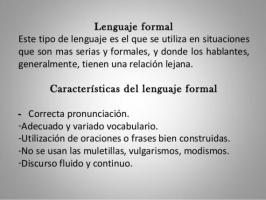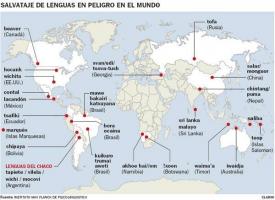Referential function examples
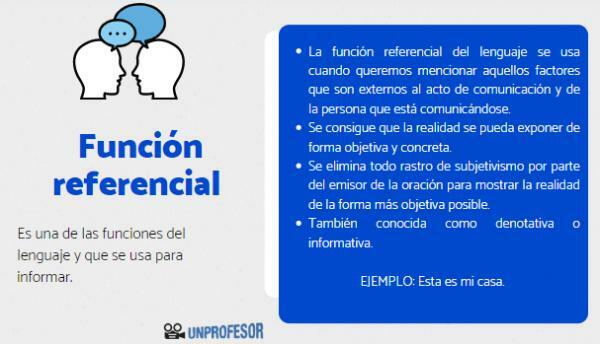
Language has different functions with the aim of being able to express different attitudes on the part of the speaker. Among these we find the one that we are going to analyze in this lesson of a PROFESSOR is the referential one. Next, we want to show you what it is, what characteristics it has and some referential function examples that can help you understand it better and learn how to use it correctly.
First of all, to be able to see the examples of referential function, it is necessary that we know what it consists of and what characteristics it has. The first thing we will point out is that this is included within the Language functions and as such it has a specific purpose.
We can say that the referential function of the language is used when we want mention those factors that are external to the act of communication and the person who is communicating. With this it is achieved that reality can be exposed in an objective and concrete way. In other words, in this function, also known as denotative or informative, any trace of subjectivism on the part of the sender of the sentence is eliminated to
show reality in the most objective way possible.This function, like the rest of the functions of the language, was defined by the linguist Roman Jakobson. His studies served to show the different ways in which human beings can express themselves and how they are capable of transmitting different messages with a specific purpose. In the same way as the message itself, also, thanks to these functions desires, feelings, orders... etc. are shown.
In the present case, the referential function, due to its objectivity, will be the one that allows verify the veracity of a message. That is, through this function we can establish a relationship between the context and the referent in a clear way. Therefore, we can point out that this function of language is one of the most used by humans since through it information about the reality that surrounds us can be transmitted.
This type of language function is used in any field, but it is essential in all those speeches that seek transmit knowledge and information, such as journalistic and scientific texts. Behind these there will always be a reference to reality.
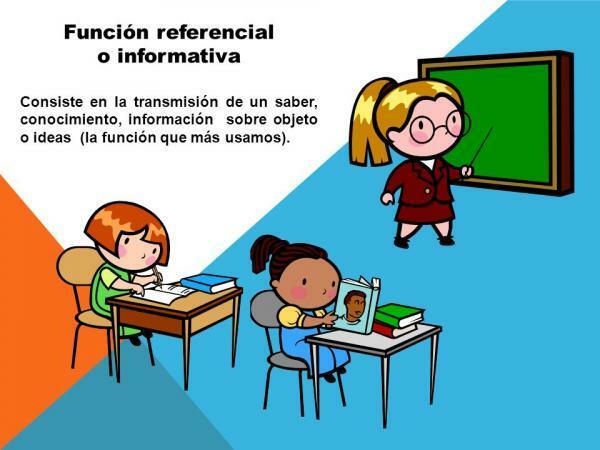
Because it is one of the most used language functions in communication, it has a series of its own resources to be able to transmit the message.
- Denotative resources: use denoting words. That is, the meaning of the words does not apply a double meaning.
- Deictic resources: words or expressions that are used with the aim of pointing out spaces, situations or people referred to by the sender of the sentence. These would be the use of words like: this, there, yesterday, tomorrow, today, we... etc.
Now that we know what the referential function of the language is, let's see a series of examples that will help us clarify the issue. First of all we are going to show a few phrases that have this function:
- This is my home.
- I went to the cinema yesterday.
- Those are his brothers.
- My mother has a sister.
- Tomorrow is Saturday.
- The plane was delayed 50 minutes.
- Last year I traveled to Peru.
How do you see these phrases are informative and fulfill the referential function of language. As we have pointed out previously, the texts that most use this type of function appear in scientific texts and in journalistic texts. You can find many examples in our sections, but here are others:
We are going to see an excerpt from a newspaper story The country:
Employees will be able to negotiate their hours when they telecommute
Companies will have to pay the expenses caused by remote work, according to the draft law to which EL PAÍS has had access
The Ministry of Labor has already drawn up the draft bill on teleworking. In it it is clear that companies must pay "in full" the expenses incurred by the worker from home, both direct and indirect. Another point, completely new, is that the "right to flexible hours" is established, which allows those who work remotely to "alter" their working day, although it sets limits since it must "respect the regulations on working time" and provided that "the period of availability. The text, to which this newspaper has had access, now has to be negotiated with the social agents, to whom it has already been sent. It also has to be approved by the Council of Ministers and go through Congress and the Senate. […]
Another example through a text taken from a scientific journal, in this case the Revista History and Social Communication from the Complutense University of Madrid:
Radio fiction in times of crisis: Sound Fiction by RNE (2009-2015)
This contribution offers the data obtained after an investigation in which they have been collected and analyzing the radio fictions included within RNE's Ficción Sonora space between 2009 and 2015. Through content analysis we establish the main characteristics of the fiction broadcast in those years since we consider her responsible for the maintenance of the genre in Spanish radio in the present. The medium adapted to the new audiences and market demands. […]
We hope these referential function examples have helped you to better understand and identify it. If you want to continue learning, be sure to visit our Spanish Language section.
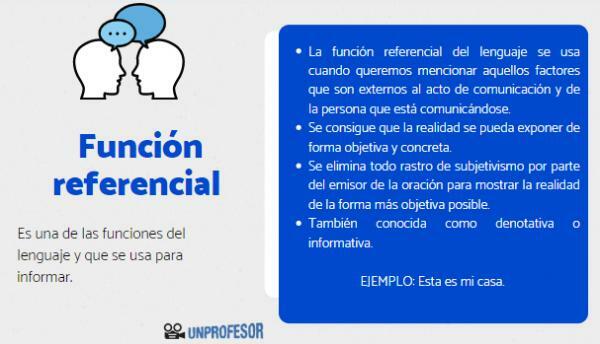
Hernando Lera, M., López Vidales, N., & Gómez Rubio, L. (2020). Radio fiction in times of crisis: Sound Fiction by RNE (2009-2015). History and Social Communication, 25(1), 113-122.

